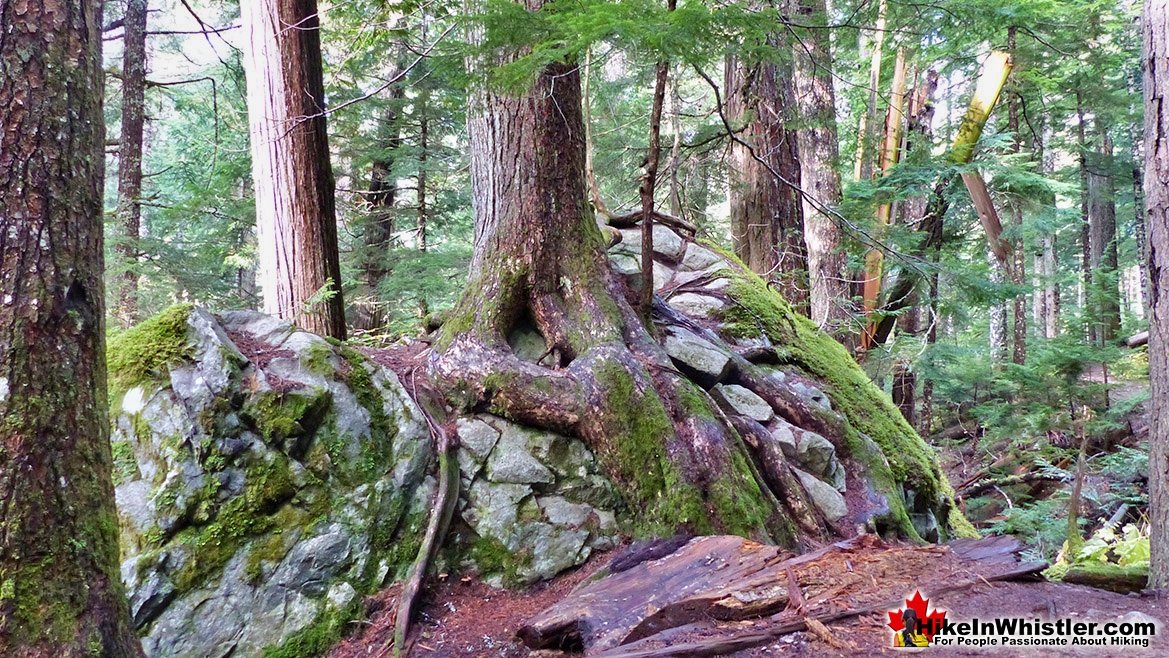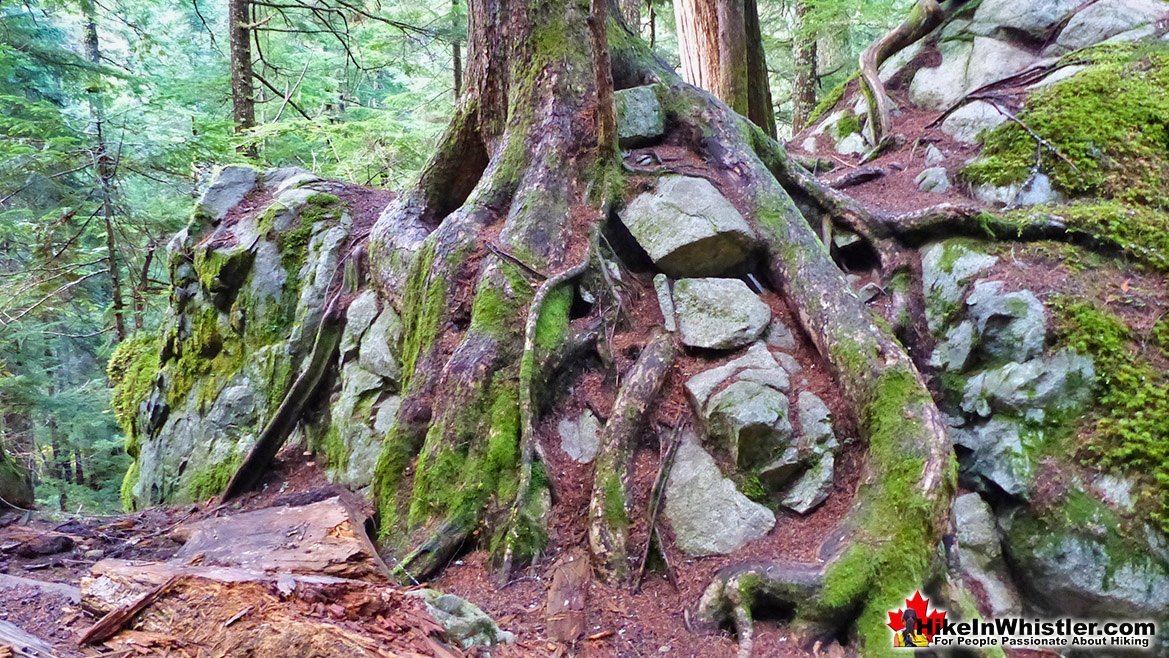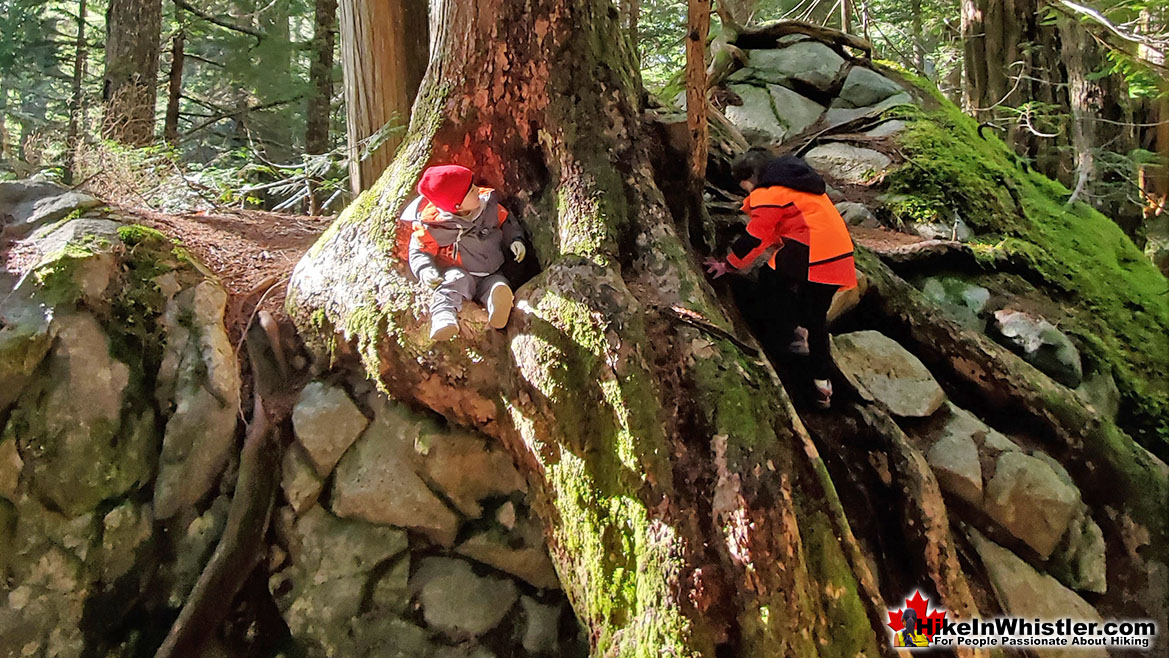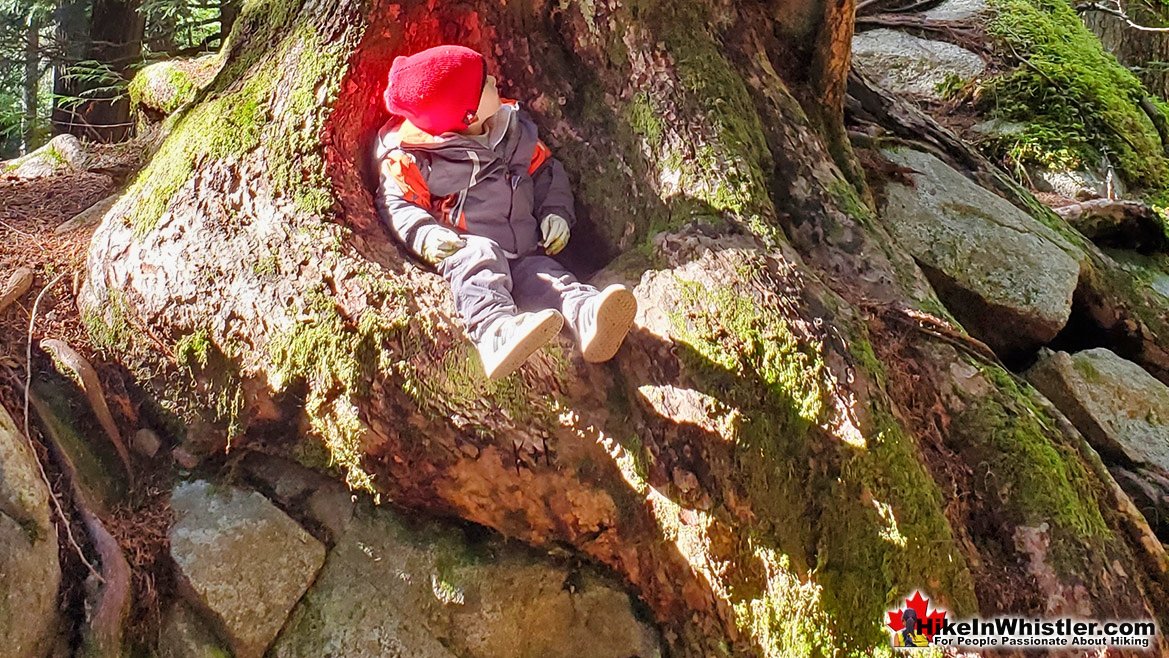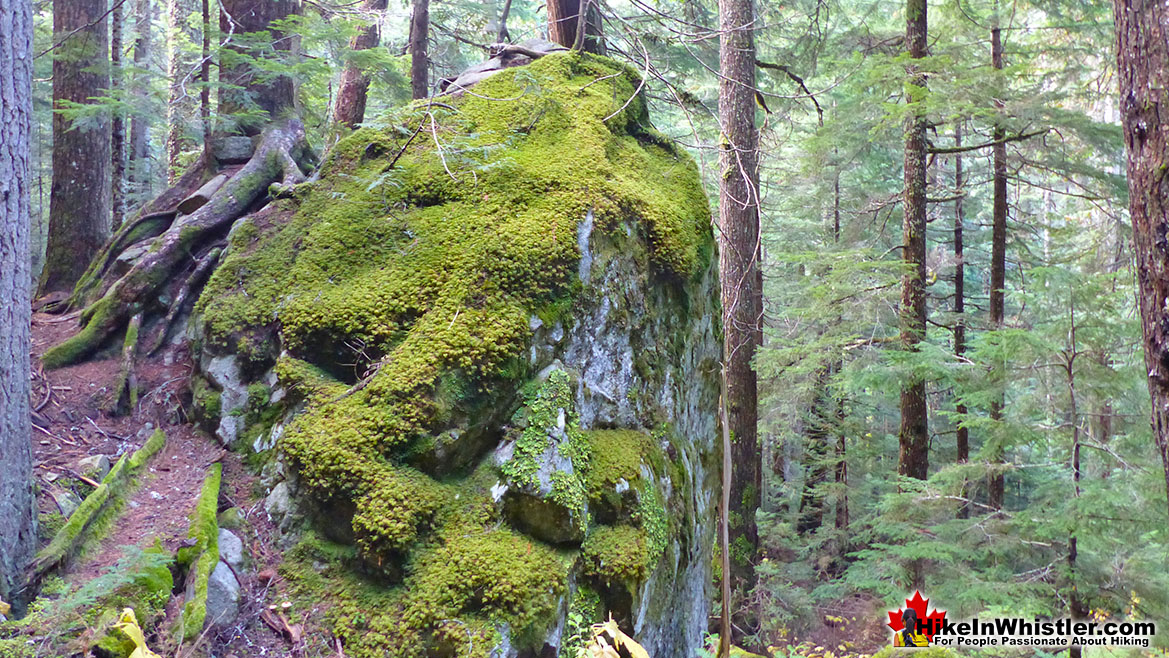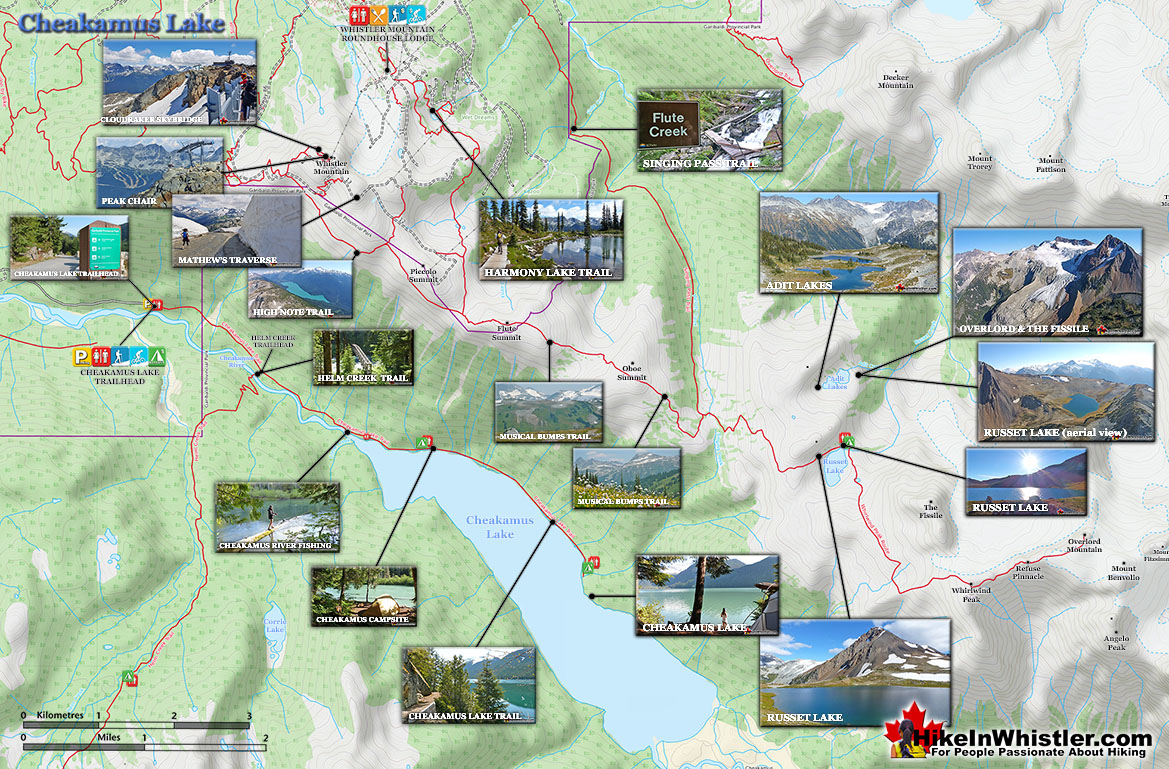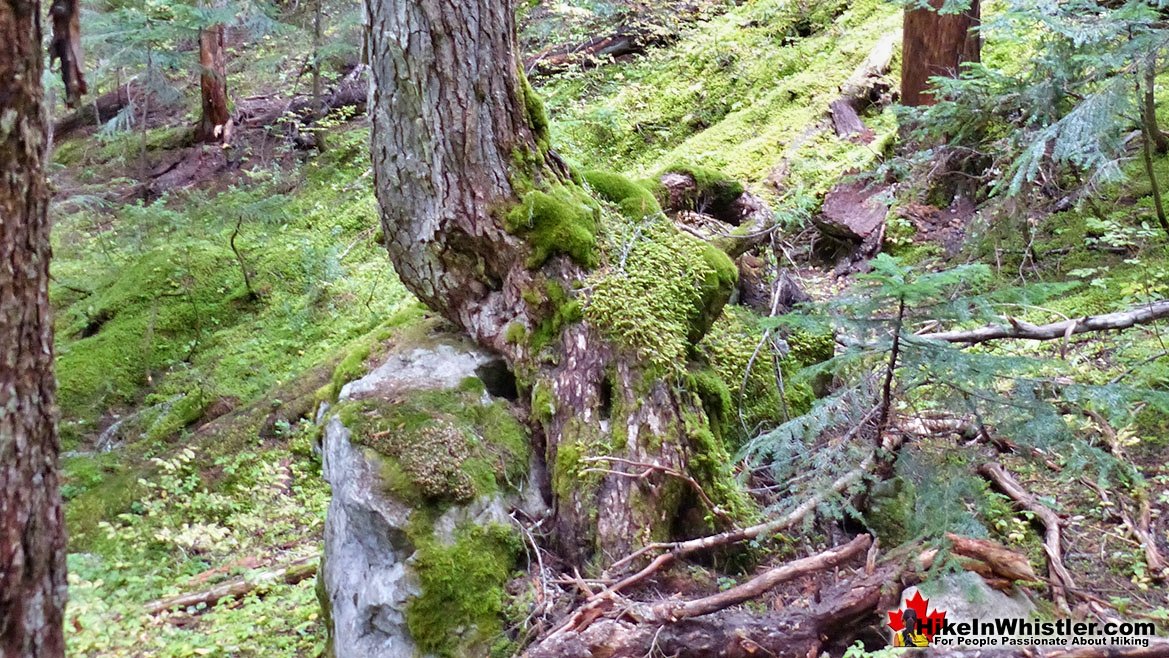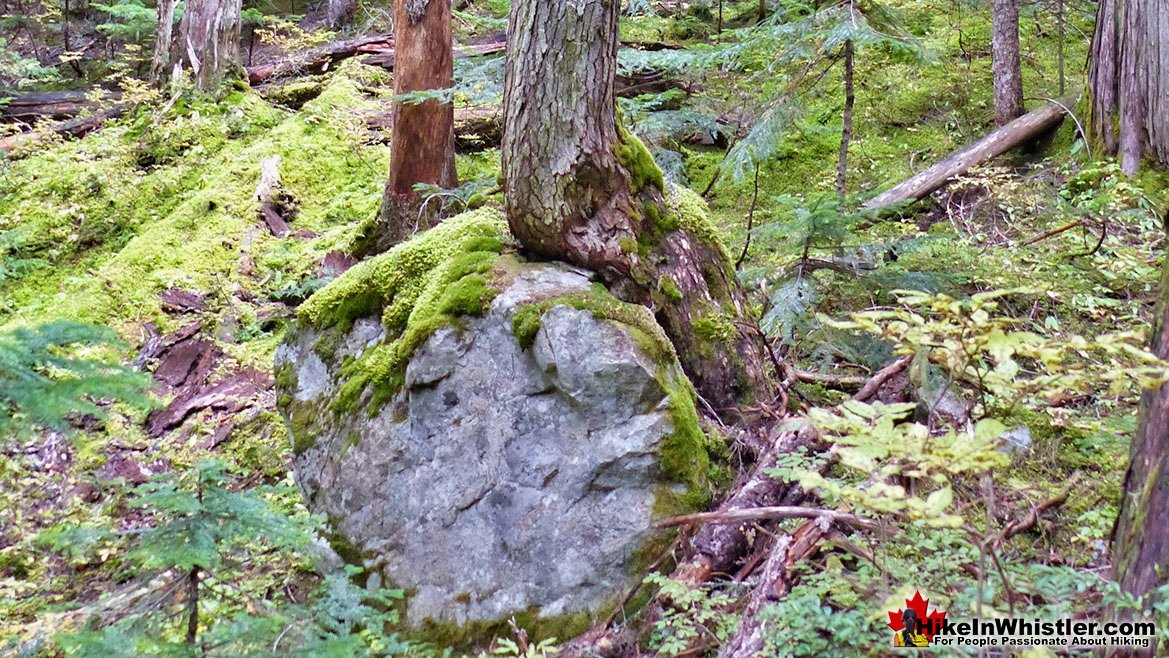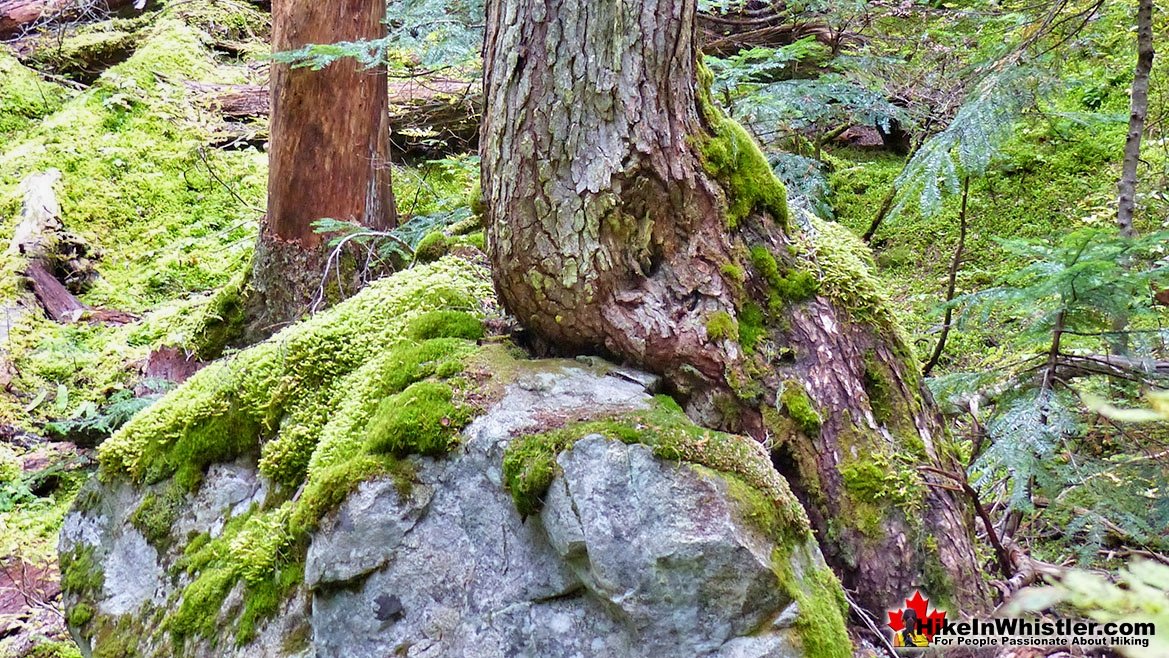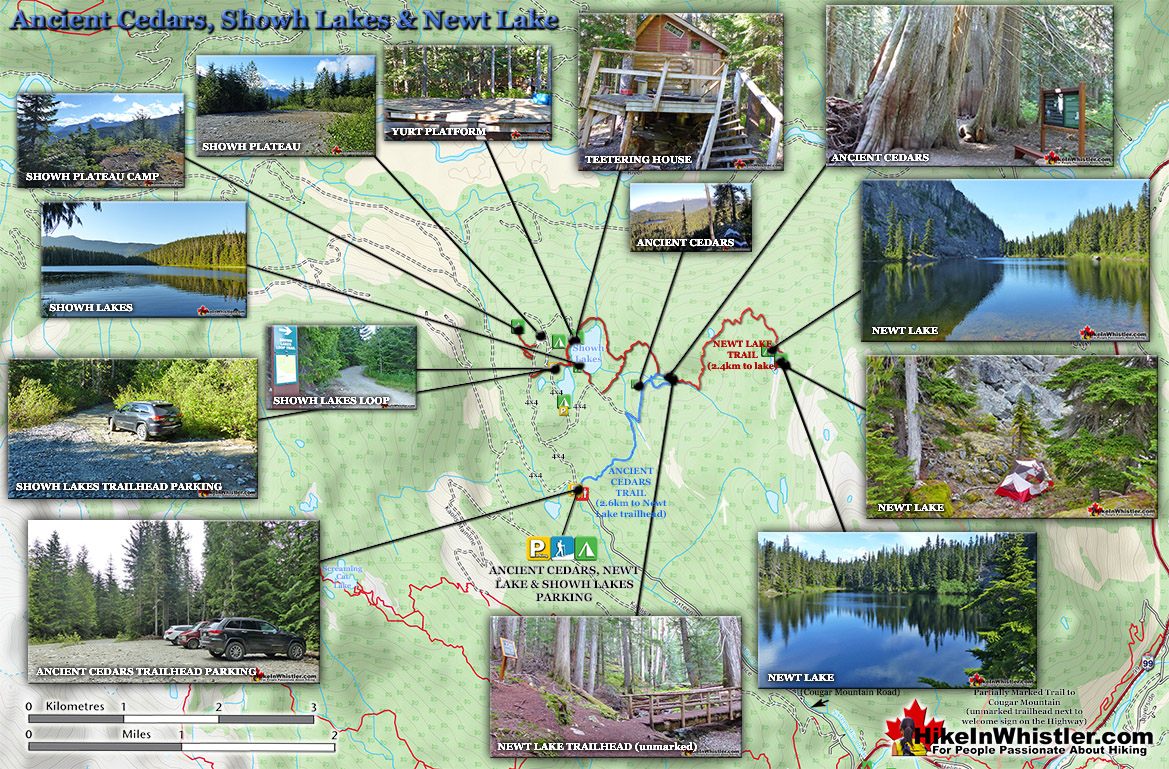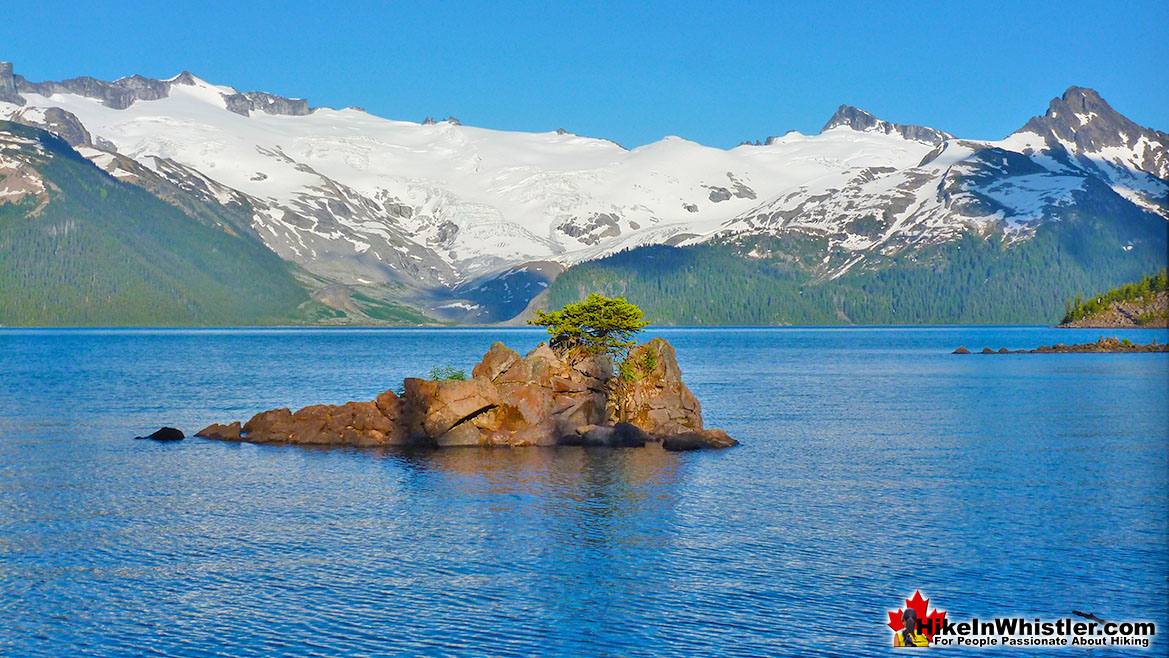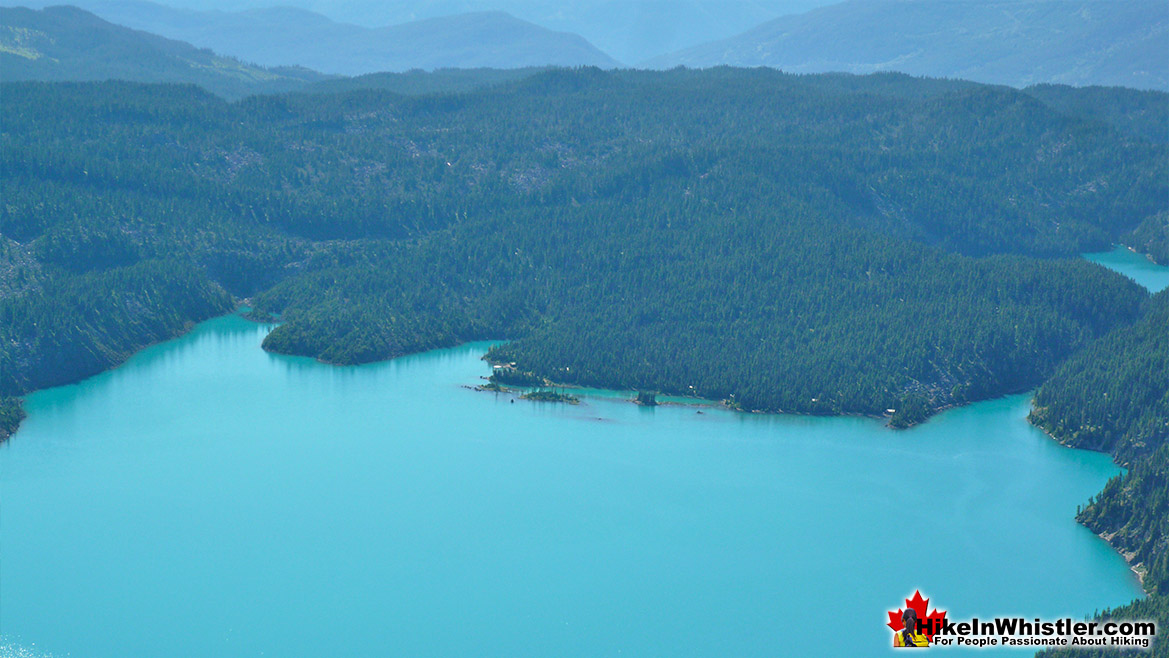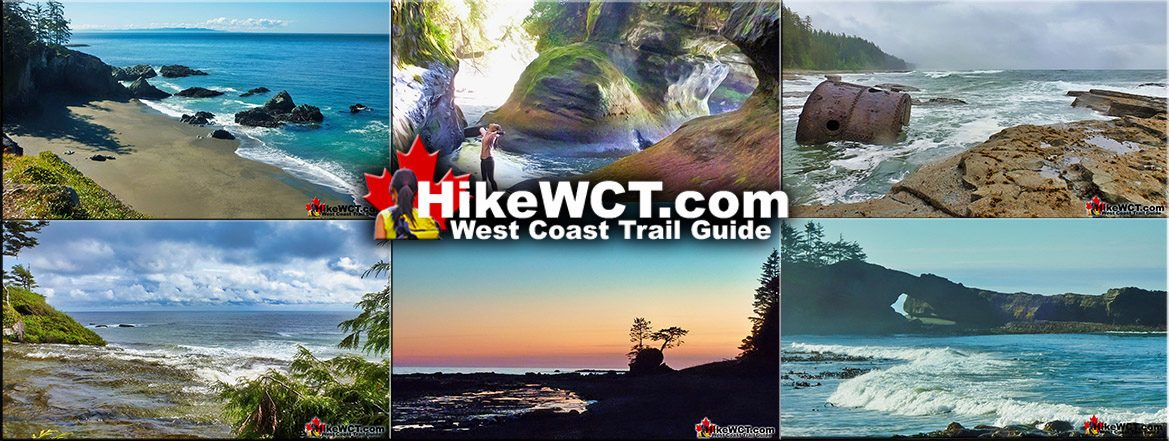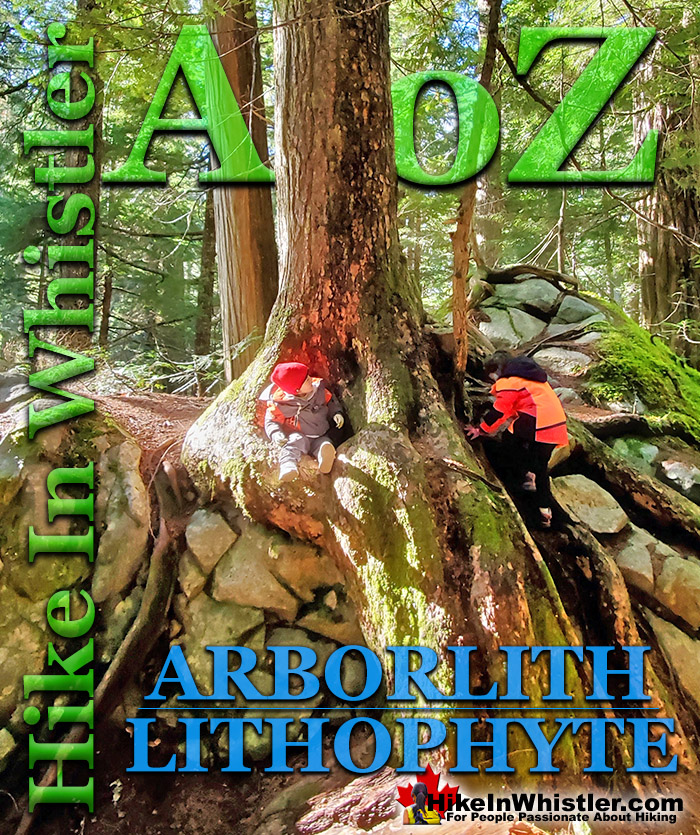
![]() Every unusual phenomenon in the forest seems to have a name, but one natural work of art seems to be without a commonly used name. Big trees with sprawling roots that wrap around huge boulders, glacier erratics or jagged bedrock are sometimes called lithophytes which translates from Latin lith and phyte as stone and plant. Lithophyte is not the best description for these because they don't so much live on rock as encompass it.
Every unusual phenomenon in the forest seems to have a name, but one natural work of art seems to be without a commonly used name. Big trees with sprawling roots that wrap around huge boulders, glacier erratics or jagged bedrock are sometimes called lithophytes which translates from Latin lith and phyte as stone and plant. Lithophyte is not the best description for these because they don't so much live on rock as encompass it.
Whistler & Garibaldi Hiking
![]() Alexander Falls
Alexander Falls ![]() Ancient Cedars
Ancient Cedars ![]() Black Tusk
Black Tusk ![]() Blackcomb Mountain
Blackcomb Mountain ![]() Brandywine Falls
Brandywine Falls ![]() Brandywine Meadows
Brandywine Meadows ![]() Brew Lake
Brew Lake ![]() Callaghan Lake
Callaghan Lake ![]() Cheakamus Lake
Cheakamus Lake ![]() Cheakamus River
Cheakamus River ![]() Cirque Lake
Cirque Lake ![]() Flank Trail
Flank Trail ![]() Garibaldi Lake
Garibaldi Lake ![]() Garibaldi Park
Garibaldi Park ![]() Helm Creek
Helm Creek ![]() Jane Lakes
Jane Lakes ![]() Joffre Lakes
Joffre Lakes ![]() Keyhole Hot Springs
Keyhole Hot Springs ![]() Logger’s Lake
Logger’s Lake ![]() Madeley Lake
Madeley Lake ![]() Meager Hot Springs
Meager Hot Springs ![]() Nairn Falls
Nairn Falls ![]() Newt Lake
Newt Lake ![]() Panorama Ridge
Panorama Ridge ![]() Parkhurst Ghost Town
Parkhurst Ghost Town ![]() Rainbow Falls
Rainbow Falls ![]() Rainbow Lake
Rainbow Lake ![]() Ring Lake
Ring Lake ![]() Russet Lake
Russet Lake ![]() Sea to Sky Trail
Sea to Sky Trail ![]() Skookumchuck Hot Springs
Skookumchuck Hot Springs ![]() Sloquet Hot Springs
Sloquet Hot Springs ![]() Sproatt East
Sproatt East ![]() Sproatt West
Sproatt West ![]() Taylor Meadows
Taylor Meadows ![]() Train Wreck
Train Wreck ![]() Wedgemount Lake
Wedgemount Lake ![]() Whistler Mountain
Whistler Mountain
![]() January
January ![]() February
February ![]() March
March ![]() April
April ![]() May
May ![]() June
June ![]() July
July ![]() August
August ![]() September
September ![]() October
October ![]() November
November ![]() December
December
Lithophyte is widely used to refer to a plant that grows on or out of a rock, but doesn’t seem accurate to describe a tree that grows over and engulfs a rock. A lithophyte grows on solid rock or in the cracks of massive boulders and therefor survives on nutrients derived from these regions. The big trees in the forest we are talking about don’t survive on or in the rock itself, but rather treat it as an obstacle and grow mighty roots over, around and under it. Decades of water erosion may have washed away soil that once allowed a tree to grow on what now appears as solid rock. This seems to be the origin of the big western hemlock on the Cheakamus Lake trail that is growing on a house sized boulder that likely tumbled down from Whistler Mountain a century ago. One side of the boulder is mostly solid rock, whereas the side with the tree growing over it is disintegrating it into smaller boulders under the vice grip of roots and tremendous weight pressing down from above.
In other circumstances heavy snow of winter may bend a tree growing on a steep slope over a boulder for several years until it grows strong enough to resist the weight of snow and grow straight up. An excellent example of this can be found on the trail to Newt Lake in Whistler. In this case a fridge sized boulder on a hillside had a western hemlock crushed against it under snow for several years until it could resist the snow and grow upward. Now a decades old tree, it appears to be growing out of the middle of a big round boulder. Only when you walk around to look at it from the side do you notice the large tree trunk bending around the rock and into the ground. It doesn’t seem accurate to call either of these two trees lithophytes. As Steven Engelhart points out, “Lithophytes are plants that grown in or on rocks but most of these seem to take their nutrition from their immediate rock environment and not by extending their roots into the ground.” He suggest the word arborlith as a more accurate term for these amazing trees. Arbor is Latin for tree and lith translates as stone.
Arborlith on the Cheakamus Lake Trail
The hiking and biking trail to Cheakamus Lake takes you through a wonderfully wild old forest with plenty of remarkable trees. This extraordinary western hemlock has wrapped its enormous roots around the crumbling remains of a huge boulder that probably came crashing down from Whistler Mountain a century ago. This arborlith looks to be fracturing the enormous rock under the weight of its huge trunk. Giant roots wrap around the side of the once solid rock and decades of growth have wrenched it into basketball sized chunks of rock.
Looking at the giant boulder from further along the trail you can see the enormous size of the rock that is comparatively smooth on one side and crumbling on the arborlith side.
More Hiking Information for Cheakamus Lake
Newt Lake Trail Arborlith
It is not unusual to see trees that have managed to penetrate a crack in a large rock face and somehow survive to become quite large. Another interesting type of arborlith you often encounter in Whistler is a large tree growing out of, or around a comparatively small boulder. These are often found on steep terrain where boulders have forced a tree to grow around and over it. A boulder may push against a small tree causing it to bend around the rock while growing, making it appear to be growing from the rock. Also, on steep sloping terrain, heavy snow can push a small tree over and keep it buried in snow. This causes the tree to grow sideways for much of the year. Eventually the tree grows large enough to not be flattened by snow and grows upward year-round. If a tree like this was forced against a boulder and buried by the snow it may eventually grow into an extraordinary looking tree that wraps around the boulder. Pictured below is a wonderful example of this type of arborlith growing along the Newt Lake trail. The tree appears to have begun growing on the upward sloping side of this big boulder. Winter snow would have pushed it against the boulder with its roots growing underneath. As the tree grew taller than the boulder, it would have been continually flattened over it until it grew strong enough to resist the weight of the snow. Decades later it has grown to a substantial size and wonderfully interesting shape.
The unmarked and deadfall obscured trailhead to Newt Lake is found at the far end of the Ancient Cedars trail on the far side of Cougar Mountain. One great aspect of this wild and beautiful lake is the interesting hike to reach it. Constantly undulating terrain, wildly chaotic forest with interesting trees, steep boulder strewn terrain and lots of deadfall to climb over and navigate around. Always interesting, challenging, yet short enough to remain very enjoyable.
More Hiking Information for Newt Lake
Garibaldi Lake Lithophyte
An example of a tree growing out of rock that the term lithophyte seem to fit fairly well is the young tree growing on one of the Battleship Islands in Garibaldi Lake. Viewed from the shoreline at the Garibaldi Lake campsite just a few metres away, this hardy little krummholz appears to exist on an island with not a trace of soil. It has managed to survive on this rocky little island on a lake that freezes half the year and is buried in deep snow for several months.
The Battleship Islands on Garibaldi Lake get their name from their appearance from Panorama Ridge as a group of battleships. Given this name by Neal Carter when his saw the islands from Panorama Ridge in 1927 and observed, "a group of tiny islands with often a single tree as a mast, presenting the appearance of boats.."
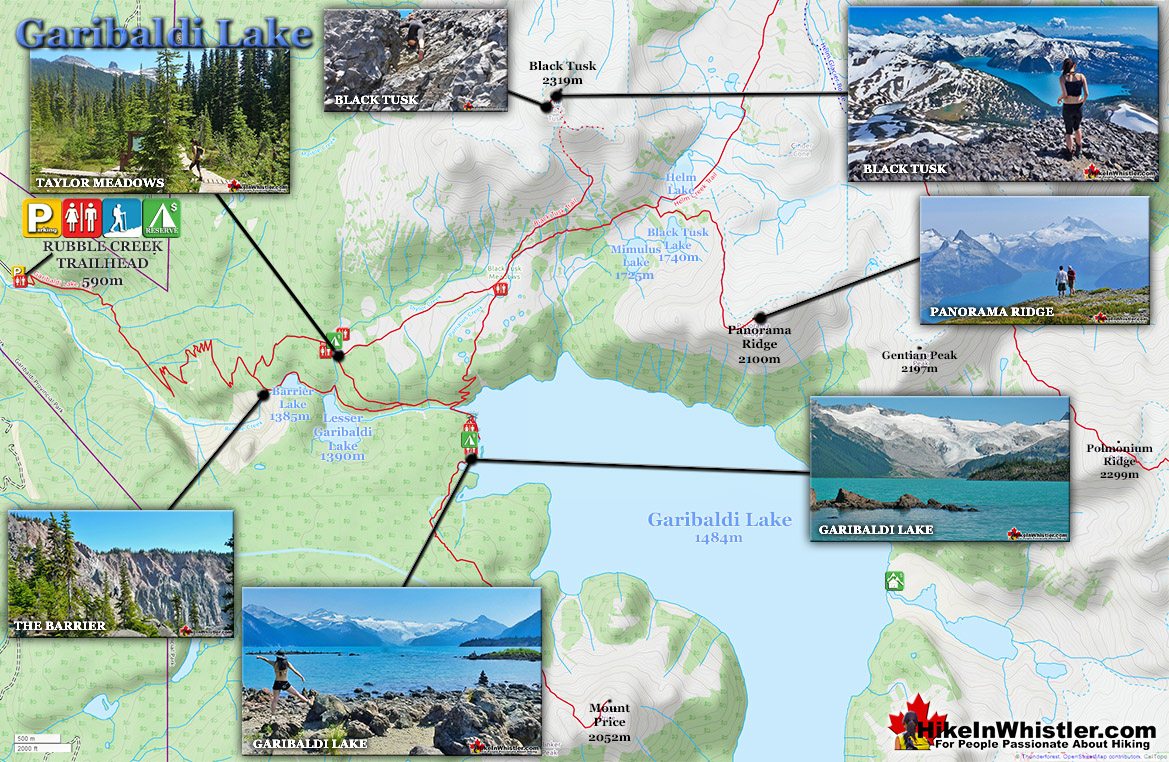
More Hiking Information for Garibaldi Lake
More Whistler & Garibaldi Park Hiking A to Z!






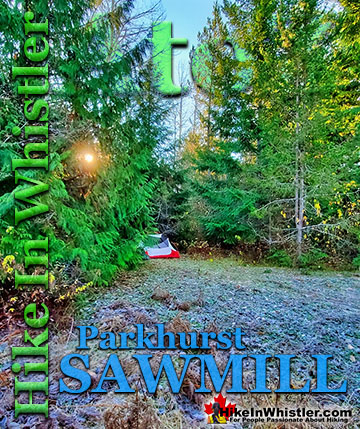

The Best Whistler & Garibaldi Park Hiking Trails!



Whistler & Garibaldi Park Best Hiking by Month!


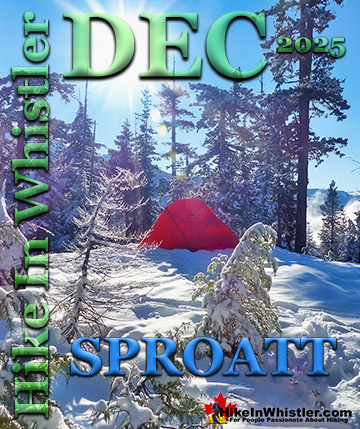

Explore BC Hiking Destinations!

Whistler Hiking Trails

Squamish Hiking Trails

Vancouver Hiking Trails

Clayoquot Hiking Trails

Victoria Hiking Trails


